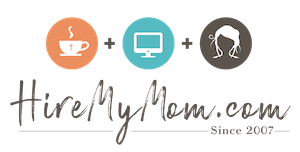Remote Work Isn’t Dead—But You Need to Know Where to Look (and Hire)

What LinkedIn’s Survey Means for Job Seekers and Small Businesses
When the pandemic hit in 2020, remote work exploded overnight. For many, it was a breath of fresh air—freedom, flexibility, and the ability to work from home became the new norm. But according to LinkedIn’s Workforce Confidence Survey (March 2025), the tide may be shifting.
Remote roles are becoming more competitive and harder to find. In 2020, 46% of employees were working remotely. As of early 2025, that number has dropped to 26%, while 55% of employees are now mostly back onsite.
So, does this mean the era of remote work is over? Not quite.
Remote Work Isn’t Going Away—It’s Evolving
Yes, the percentage of remote roles has decreased since the pandemic’s peak. But perspective matters: in 2019, before the pandemic, just 6.5% of private-sector workers worked from home. Today, that number is still four times higher.
Remote work has simply stabilized—it’s no longer a pandemic-era necessity, but it remains a strategic option for many businesses and professionals who value flexibility, focus, and a better work-life balance.
What This Means for Job Seekers
If you’re a professional looking for remote work, it might take more intention and discernment to find the right role—but it’s absolutely possible. The good news? HireMyMom.com was built for this exact moment. We specialize in connecting highly skilled professionals—especially moms—with legitimate, flexible, remote job opportunities from small businesses that value quality, reliability, and relationship.
Here’s what sets HireMyMom apart:
- We vet every job post—no scams, no fluff.
- We attract mission-minded small businesses who respect your time and skills.
- You’ll find flexible roles across marketing, admin, writing, customer service, account and project management and more.
What This Means for Small Business Owners
If you’re a small business owner, you may be wondering if remote hiring still makes sense. The answer? Absolutely.
In fact, with more large companies pulling talent back into offices, you have a golden opportunity to tap into experienced remote professionals who want to work on meaningful, flexible roles. Whether you need a part-time bookkeeper, a social media manager, or an executive assistant—you’ll find trustworthy, talented candidates on HireMyMom.
Bonus: HireMyMom saves you time and hassle. You won’t be lost in the noise like on the big job boards.
Final Thoughts
Yes, remote work is facing new challenges—but that just means job seekers and small business owners need a better way to connect. That’s where HireMyMom.com comes in.
→ Job seekers: Create your profile and start applying for your dream remote job today.
→ Business owners: Post your remote job and find your perfect hire.
The future of remote work isn’t gone—it’s just more focused. Let’s build that future together.









